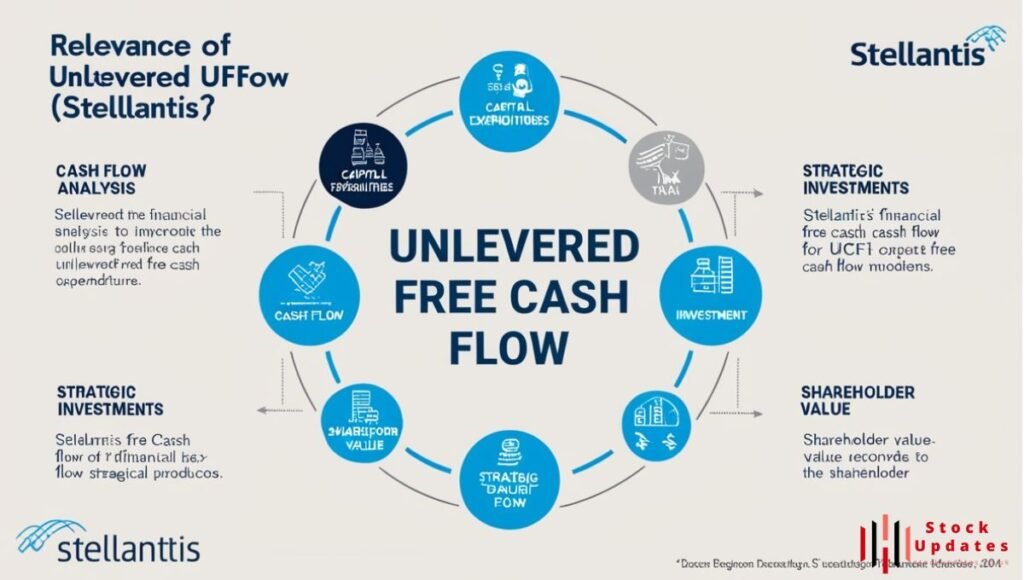Stla Unlevered Free Cash Flow
UFCF is one of the most popular financial evaluations that helps to measure the Stla Unlevered Free Cash Flow which, generated by the company, and is capable of being used for additional investments, stock buyback or the payouts to the shareholders and the debt repayments; irrespective of the specific capital structure of the analyzed enterprise. For investors analyzing automotive giants like Stellantis N.V. (NYSE: As is the case with STLA issuing investing in UFCF gives glimpses of their financial flexibility and future growth as well as the capacity of the two to utilize and allocate resources. In this blog post, UFCF stands for Stellantis; why it matters, how to calculate it, and what it tells about the company.
Unlevered Free Cash Flow, what is this term?
Stla Unlevered Free Cash Flow is characterized as the amount of cash that is earned by a business from its operations, expenses of operation, capital expenditures, taxes, but before factoring in the interest expenses. This cash flow figure is particularly useful in that it presents the company’s cash flow ‘exclusively of debt,’ which means that it eliminates whatever degree of debt the company has adopted; in this way, it is possible to directly compare the cash flow figures across companies while bearing in mind that each pertains to a different degree of indebtedness.
Why does DCF use unlevered free cash flow?
UFCF for DCF model The main reason why DCF uses unlevered free cash flow is because it clearly shows the cash available for all the investors, that is, the debt holders as well as the equity holders adjusted for financing costs. Since EBIT excludes the influence of interest expense on the financial results of a firm, UFCF allows firm comparison at different rates of capital intensity allowing for consistent valuations.
The UFCF Relevance for Stellates

Stellates belongs to a very competitive and cyclical economic sector, which requires enormous and constant investments in new technology, production facilities and in research and development. As the global automotive market transitions from internal combustion engines to electric power systems, UFCF enables Stellates’ investors to gauge its access to funds for such strategic directions as the creation of EVs and intelligent driving systems. Here are some key reasons why UFCF is critical for Stellates and its stakeholders:
1. Cash Flow for Innovation
Stellates has grand EV plans, to build 70% of its new cars for sale in Europe and 40% of its vehicles for sale in the U.S. from low-emission vehicles by 2030.
2. Comparison Against Competitors
Some of the biggest automakers Ford, GM & Tesla are also have their stakes at the EV market. Unlevered cash flow also provides investors with the opportunity of comparing Stellates’ cash generation capacity with these peers, without interference from differences in the companies’ debt or financing.
3. Financial Flexibility
Evaluating the UFCF, while having a high UFCF means Stellates has a flexibility to make capital investments or even manage its debts a lot better. In case of rich cash flow, the company can reinvest the amount in growth or pass it to the shareholders in the form of dividend or stock buyback.
4. Resilience during Market Cycles
This industry is characterized by volatility, and it is in phases depending on overall economic conditions. UFCF is strong at Stellates because it is a reliable indicator that places the organization in a good standing and operational efficiency to thrive when the market is not as forthcoming.
Calculating Stellantis’s UFCF
Using this format we can identify the key drivers from Stellantis’s EBIT, CAPEX, depreciation and working capital to arrive at the UFCF.
| Metric | Value (in millions USD) |
| EBIT | $11,500 |
| Tax Rate | 24% |
| Depreciation | $2,500 |
| CAPEX | $3,000 |
| Changes in Working Capital | $500 |
Step 1: Adjust for Tax
To arrive at an after-tax EBIT we have to take a product of EBIT and (1 – Tax Rate).
EBIT (After Tax) =11,500× Gross Profit × (1−Tax Rate) =11,500 × 1.24=11,500×0.76=8,740
Step 2: Add Depreciation
UFCF means unlevered free cash flow to it; deterioration is added since it is a non-cash expense.
8,740 + 2,500 = 11,240, 740+2,500 = 3,240 740-2,500 = 1,760
Step 3: Subtract CAPEX
There are deductions done on capital expenditures since they act as a reduction of cash outlay.
11520−3000= 8520−19000=10480
Step 4: Take into account variation in Working Capital
When the working capital rises, it is an indication of a cash expense and while when the working capital shrinks, it signees that there is cash inflow.
8240-500=7740 8,240-500 = 7,740 8,240−500 = 7,740
Exposition of the UFCF of Stellantis
A UFCF of $7,740 million also shows that Stellantis produces and distributes significant Stla Unlevered Free Cash Flow from its operations after deducting for capital investment and tax differences. Such a cash flow means that Stellantis can meet their investments in new projects, debt services, or distributions to the shareholders without helping from outside sources. A high UFCF also reflects operational efficiency and its cautious management by Stellantis due to the nature of high capital intensive automobile industry.
The Consequences of UFCF for Stellantis as a Strategic Manufacturer
1. Putting money into Electric Vehicles and Sustainable practices
The BEVs are to be trialled as part of the plan where Stellantis announced it will invest billions in electrification across its portfolio. A solid UFCF enables the company to fund these large capital investments, which are necessary to address both REC credits and growing customer needs in strategic markets.
2. Opportunity to Reduce Debt of and Boost Returns to Shareholders
UFCF has provided Stellantis with opportunities to manage its debt levels and, thus improve its balance sheet and reduce its interest costs. Also, excess cash flow can be applied to increase or declare new dividends, and also, this is good for all shareholders as a signal; or can be used to buy back its shares which will also increase the value of all shareholders.
3. Acquisition Capability for Strategic Growth
In the automotive industry, acquisitions and partnerships are inevitable for gaining access to technology, customers and markets and for realizing economies of scale. When accompanied by a solid UFCF, it is possible for Stellantis to engage in the acquisition or partnership that enshrouds valuable synergies while maintaining the robust financial position.
Stellantis UFCF Competitor Analysis

Take Ford, GM and Volkswagen for instance, they are making the same levels of investment in electric cars and autonomous vehicles. From their respective UFCFs one can determine which company has the highest operating Stla Unlevered Free Cash Flow adjusted for capital expenditures. When comparing different firms, it might be possible to discover that more significant UFCFs result in greater capacities for firms to invest in their development without affecting solvency adversely.
Conclusion
Net of funding, unlevered Stla Unlevered Free Cash Flow is the raw measure of profitability and a critical indicator of Stellantis’s current and future performances. With existing automotive focuses shifting to electrification and autonomy, UFCF for Stellantis exists as an indicator of how well it can fund these strategic initiatives, control debt, and even return value to shareholders. In the case of UFCF, investors can assess the company’s ability to generate cash, free from the influence of debt, to make better decisions on its stock.
Stellantis’ UFCF shows investors how well it is doing in terms of achieving operational efficient, financial freedom and future growth in the context of a competitive automobile sector over the years.
Read More about Market And other Categories at stock Updates.
























Post Comment